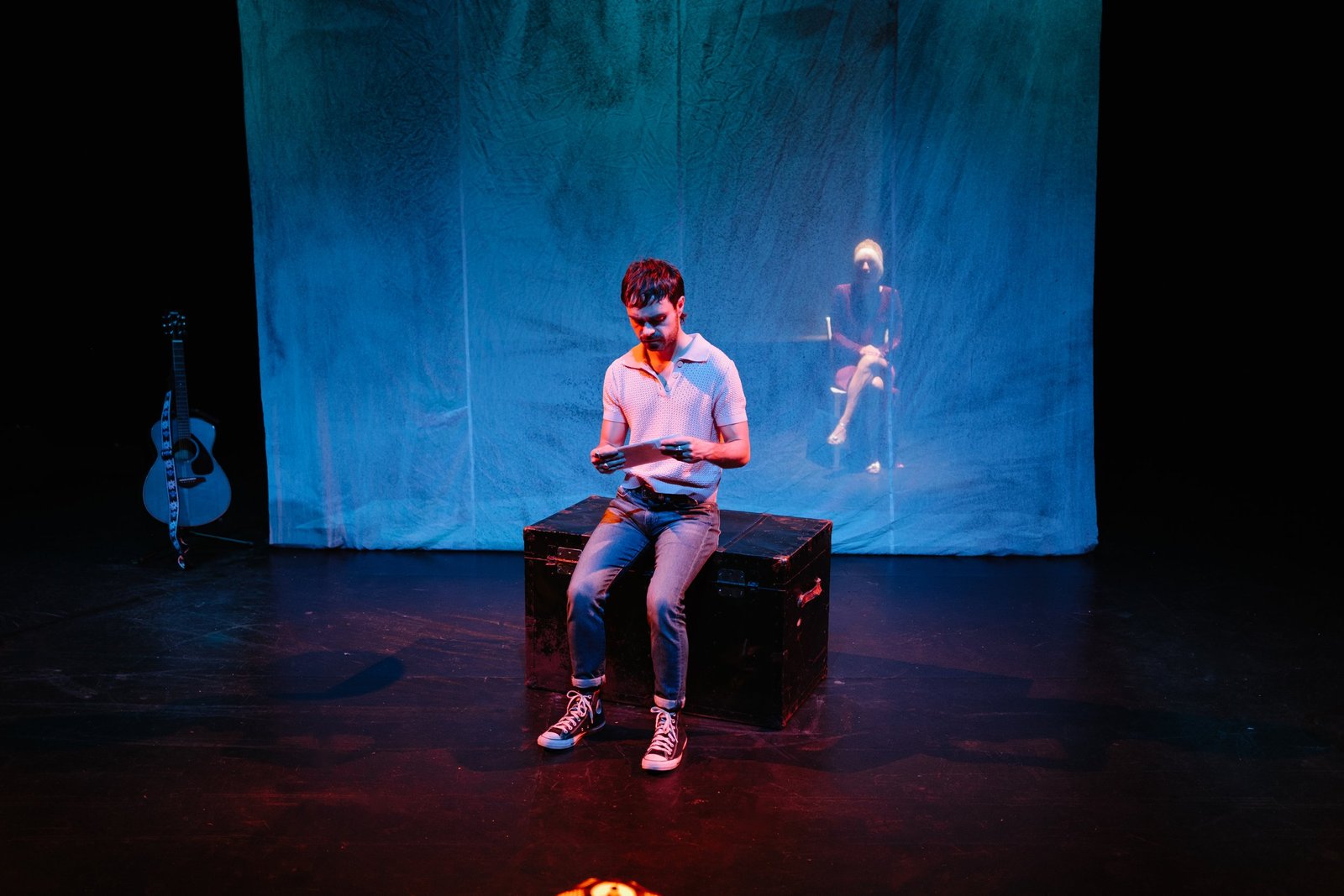Obviously, then, as a dramatization of my life, Strange/Familiar isn’t a straightforward autobiography. Instead, the play blurs personal history with artful invention, even as the medium of theatre blurs the objective reality of live performance with the subjective impact of suspended disbelief. As a result, in the world of the play, it is difficult to differentiate the facts of what really happened in my life from the fictions that never happened yet still convey the metaphorical truth of my experience.
Why write a play this way? Once I’d decided that I wanted to dramatize material from my own life, why not simply try to reproduce the facts, rather than cause so much confusion between objective reality, subjective perception/recollection, and pure fictitious invention?
Partly, I blame novelists for their bad influence. Autofiction, the method in question, names a literary practice inaugurated by the French writer Serge Doubrovsky in his 1977 novel Fils. More recently, there has been a twenty-first century renaissance of autofiction, as is exemplified by authors as diverse as Rachel Cusk, Karl Ove Knausgård, and Ocean Vuong. Moreover, autofiction is no longer confined to the novel alone. As Alison Gibbons writes, this “explicitly hybrid form of life writing,” which “merges autobiographical fact with fiction,” has also “been observed in the visual arts, cinema, theatre, and online.” Today, autofiction is a capacious mode of artistic production, which is hardly surprising given that we live at a time of breakneck technological advancement and mass mediatization. Everyone has a story to sell, from politicians to priests, from reality TV stars to researchers. We are enjoined on a daily basis to understand ourselves and our world in terms of plot, character, and point of view. Perhaps it’s not so much that artists are newly interested in adapting real life, as it is that real life has increasingly begun to resemble art.
With the benefit of hindsight, I can articulate three interrelated motivations for choosing autofiction as my method.
First, given the cultural context outlined above, I was eager to offer an epistemological provocation. Precisely by collapsing the empirical with the experiential, autofiction allows one to pose a timely critical dilemma: how to distinguish fact from fiction and, between those extremes, ascertain what one holds to be true.
I wanted an aesthetic mode that would feel to an audience like being queer and adopted has felt to me: uncertain, searching, and yet full of potential.
Second, my choice to work autofictionally was an ethical strategy. By blurring the lines between fact and fiction, I was able to dramatize—or not—the people in my life, as well as my entirely fictitious characters and myself, with sensitivity and care.
Third, I wanted an aesthetic mode that would feel to an audience like being queer and adopted has felt to me: uncertain, searching, and yet full of potential. Adoptees’ origins are often mysterious, much like the origins of sexuality and gender. Coming to know oneself, for adoptees and queers alike, is also a process of deferred revelation. I therefore sought in the shifting ground of autofiction an analogue for the shifting ground of identity and belonging.
Adoption is not a new topic in Western theatre. No less foundational a play than Oedipus Rex is also our first widely known play on the theme. “Do you know who your parents are?” Tiresias asks Oedipus, prompting his tragic search for the truth. Shakespeare, too, frequently reunites grown children with the parents from whom they were separated at birth, as in The Winter’s Tale. But these examples aren’t necessarily encouraging. We all know what happens to Oedipus. And in Shakespeare, as per Marianne Novy’s critique in Reading Adoption, parent-child reunions typically foreground “the genetic similarity revealed when [the transplanted child] meets hereditary family.” Such feelings of uncanny recognition are true to some adoptees’ experience, but not to all. And what about the adoptees who never meet their birth families, whether through choice or circumstance? What are their stories? How should they be represented?
In The Imprint of Another Life, Margaret Homans contends that “Adoption has a special relationship to fiction making. Adoption has long been seen as a fictive or ‘as if’ form of family making, fabricated or figurative instead of biological or literal.” Novy likewise notes that this “as if” quality has often been used as a pretext to disqualify or invalidate adoptive kinship bonds: adoptive parents aren’t ‘real’ parents; their children aren’t their ‘real’ children. The echoes in LGBTQ+ experience are obvious: how often are queers told that their identities aren’t viable, or that chosen families don’t constitute legitimate kinship?
As I wrestled with how to write Strange/Familiar, I realized I needed to reframe our culture’s longstanding anxieties over parentage, breeding, and family. I wanted to reclaim queerness and adoption as inspirational subject positions, capable of speaking to the possibilities inherent not only in creating a work of art but also in creating a life.


Recent Comments